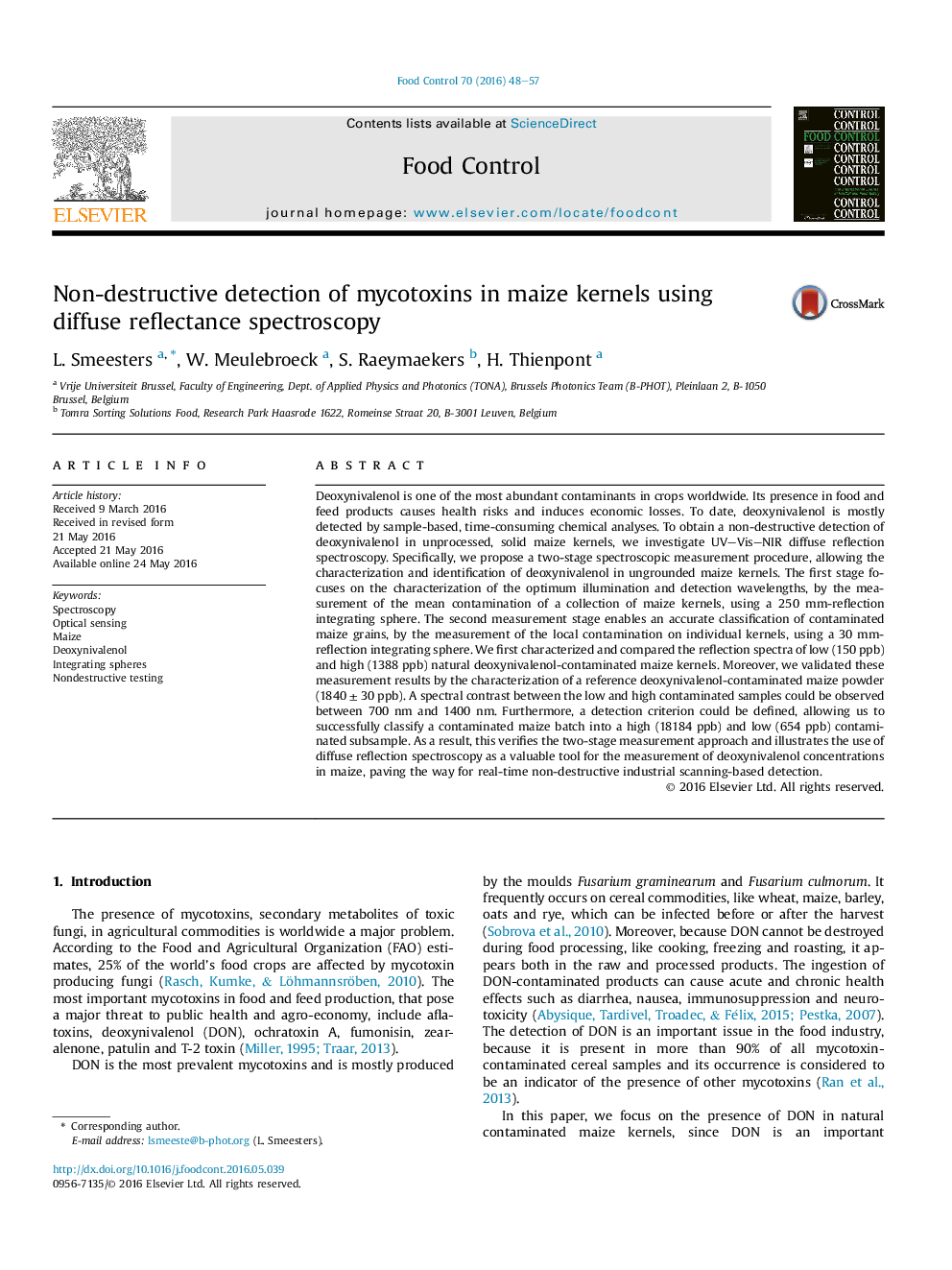| کد مقاله | کد نشریه | سال انتشار | مقاله انگلیسی | نسخه تمام متن |
|---|---|---|---|---|
| 4558969 | 1628392 | 2016 | 10 صفحه PDF | دانلود رایگان |
• Demonstration of diffuse reflectance spectroscopy for deoxynivalenol detection.
• Two-stage measurement procedure to sort-out contaminated kernels.
• Efficient research methodology to define the optimal detection wavelengths.
• Monitoring of the localized contamination in individual maize kernels.
• Optical, non-destructive sensing of deoxynivalenol in solid food products.
Deoxynivalenol is one of the most abundant contaminants in crops worldwide. Its presence in food and feed products causes health risks and induces economic losses. To date, deoxynivalenol is mostly detected by sample-based, time-consuming chemical analyses. To obtain a non-destructive detection of deoxynivalenol in unprocessed, solid maize kernels, we investigate UV–Vis–NIR diffuse reflection spectroscopy. Specifically, we propose a two-stage spectroscopic measurement procedure, allowing the characterization and identification of deoxynivalenol in ungrounded maize kernels. The first stage focuses on the characterization of the optimum illumination and detection wavelengths, by the measurement of the mean contamination of a collection of maize kernels, using a 250 mm-reflection integrating sphere. The second measurement stage enables an accurate classification of contaminated maize grains, by the measurement of the local contamination on individual kernels, using a 30 mm-reflection integrating sphere. We first characterized and compared the reflection spectra of low (150 ppb) and high (1388 ppb) natural deoxynivalenol-contaminated maize kernels. Moreover, we validated these measurement results by the characterization of a reference deoxynivalenol-contaminated maize powder (1840 ± 30 ppb). A spectral contrast between the low and high contaminated samples could be observed between 700 nm and 1400 nm. Furthermore, a detection criterion could be defined, allowing us to successfully classify a contaminated maize batch into a high (18184 ppb) and low (654 ppb) contaminated subsample. As a result, this verifies the two-stage measurement approach and illustrates the use of diffuse reflection spectroscopy as a valuable tool for the measurement of deoxynivalenol concentrations in maize, paving the way for real-time non-destructive industrial scanning-based detection.
Journal: Food Control - Volume 70, December 2016, Pages 48–57
